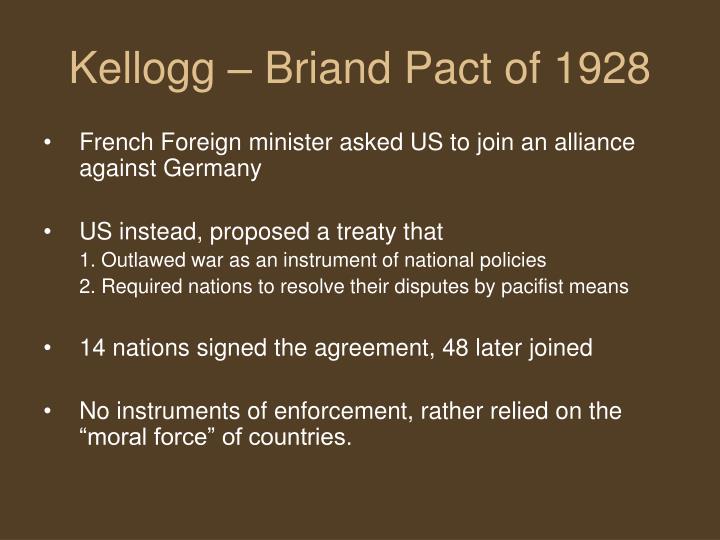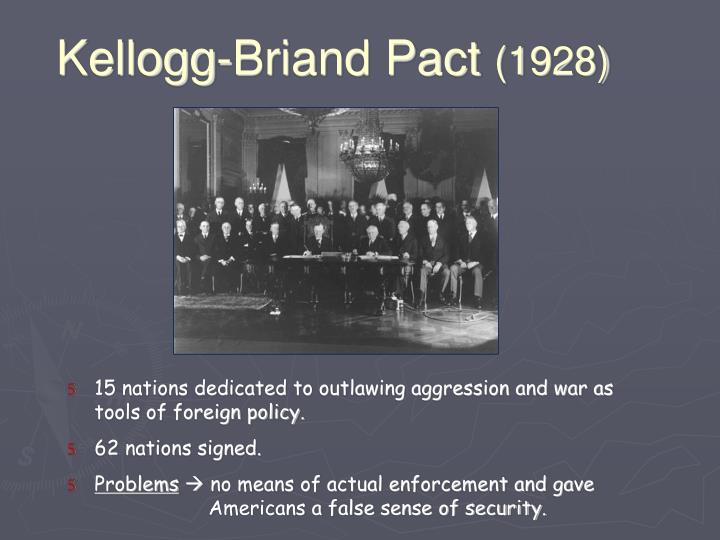

Such an agreement, Briand stated, would "greatly contribute in the eyes of the world to enlarge and fortify the foundation on which the international policy of peace is being erected." Briand's overture to the United States was part of a larger campaign that France was waging to form strategic alliances that would improve its national security. In this message Briand announced France's willingness to join the United States in an agreement mutually outlawing war. The origin of the Kellogg-Briand Pact was a message that the French foreign minister, Aristide Briand, addressed to the citizens of the United States on April 6, 1927, the tenth anniversary of the United States' entrance into World War I. This soon proved to be a false hope though Germany, Italy, and Japan were all signatories, the treaty did not prevent them from committing aggressions that led to World War II. Instead, the treaty was based on the hope that diplomacy and the weight of world opinion would be powerful enough to prevent nations from resorting to the use of force. Kellogg-Briand contained no sanctions against countries that might breach its provisions. By 1933 sixty-five nations had pledged to observe its provisions. The treaty was drafted by France and the United States, and on August 27, 1928, was signed by fifteen nations. " The treaty did not achieve its intended result, but did provide the founding principle for international law after World War II.The Kellogg-Briand Pact, also known as the Pact of Paris, was a treaty that attempted to outlaw war (46 Stat.


The principal treaty concluded at Locarno was the Rhineland Pact between Germany, France, Belgium, the United Kingdom, and Italy.Describe economic and political neocolonialism, as well as the Kellog- Briand Pact of 1928.This map indicates the nations that were party to the Kellog- Briand Pact of 1928 and their degree of involvement in the treaty.As a practical matter, the Kellogg– Briand Pact did not live up to its aim of ending war, and in this sense it made no immediate contribution to international peace and proved to be ineffective in the years to come.īest-known foreign policy initiative was the Kellogg– Briand Pact ofġ928, named for Coolidge's Secretary of State, Frank B.The 1928 Kellogg– Briand Pact was concluded outside the League of Nations, and remains a binding treaty under international law.The Kellogg- Briand Pact was established with similar war-prevention goals in mind.Kellogg, as shown in and French foreign minister Aristide Briand, as shown in.

, Germany, and France signed the Kellogg- Briand Pact, a war-prevention effort that attempted to declare war illegal. Examples of Kellogg-Briand Pact in the following topics:


 0 kommentar(er)
0 kommentar(er)
